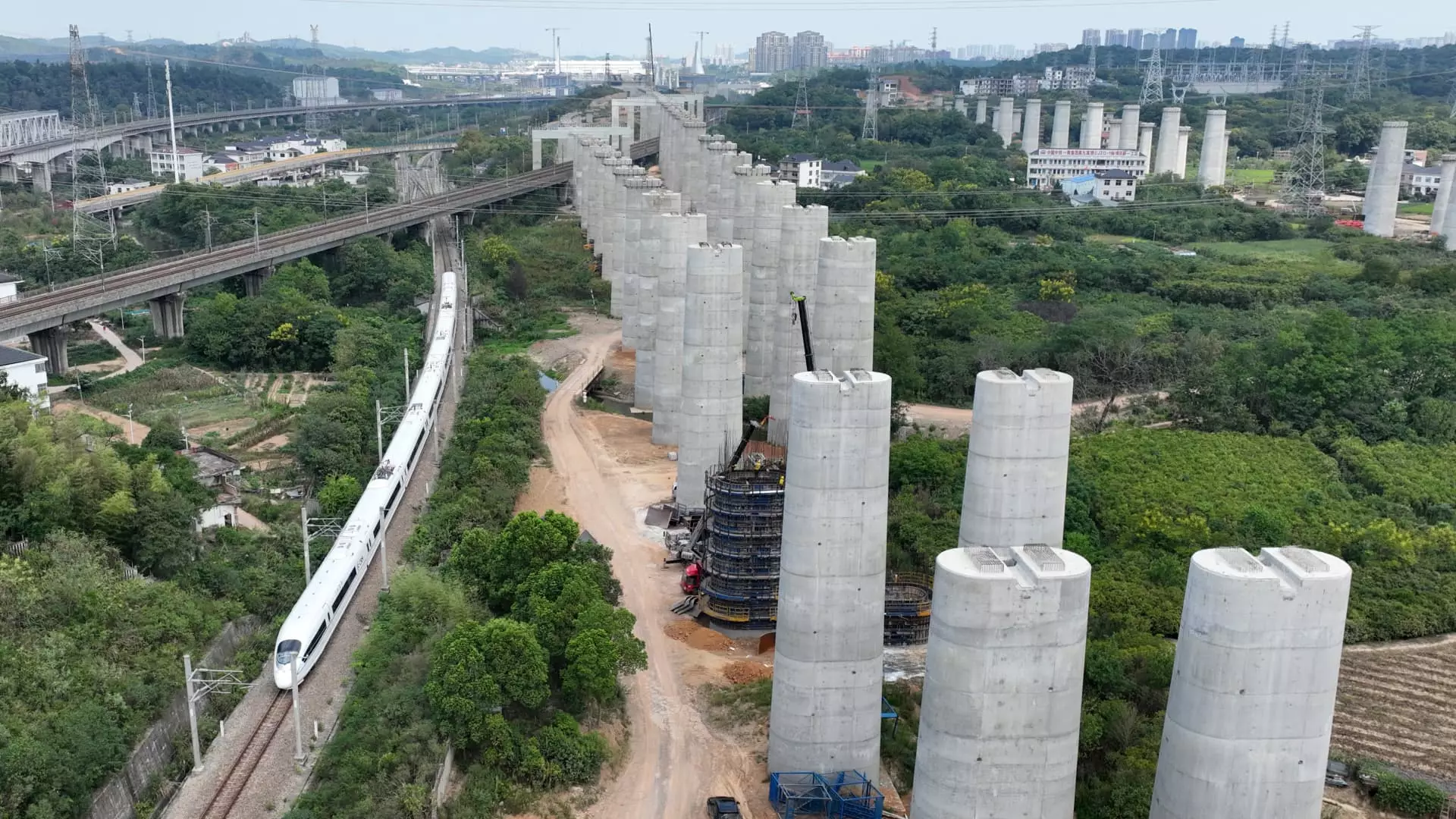China’s economic landscape is in a state of turbulence, driven in large part by a pronounced consumption slowdown that can be traced back to the country’s ongoing real estate crisis. This issue is further complicated by the financial framework of local governments, which has come to heavily rely on revenues generated from real estate transactions. The confluence of these two elements creates a precarious situation that not only threatens local government stability but also affects the broader economic fabric of the country.
For nearly two decades, real estate has been at the core of Chinese household wealth accumulation. Many families viewed property investment as a secure avenue for building assets. However, the significant policy shift initiated in 2020 aimed at curbing excessive borrowing by real estate developers has morphed this lucrative sector into a financial quagmire. The resultant decline in property values has fueled a vicious cycle of reduced consumer confidence and sluggish spending patterns. With falling home prices, families are increasingly hesitant to invest in new properties or make large purchases, further perpetuating the slowdown in consumption, which is a crucial driver of economic growth.
The financial health of local governments in China has relied heavily on land sales and property taxes for revenue generation. When property values decline and developers cut back on land purchases, this revenue stream shrinks dramatically. Analysts from S&P Global Ratings have articulated a grim forecast, projecting a recovery timeline of three to five years for local government finances, with the prospects for timely debt stabilization looking increasingly somber. The cumulative effects of a declining tax base, coupled with ongoing land sale challenges, create a scenario ripe for fiscal distress among local administrations.
Disconcertingly, the pressure to recuperate lost revenues is manifesting in local governments reaching back into history to demand back taxes from businesses, some tied to operations dating as far back as 1994. This initiative has sparked outrage among business owners, led to a chilling effect on investment, and exacerbated the pervasive uncertainty felt by consumers regarding future income. Strained businesses have little incentive to hire or increase salaries, further tightening the consumer spending belt. With an economy already vulnerable, the burdensome weight of retroactive taxation undermines the potential for business growth, leading to stagnated retail sales generation, which currently hovers around values not seen since the COVID-19 pandemic.
The Chinese National Taxation Administration has sought to contain the situation by affirming that the recent tax notices are standard procedures aligned with regulations and not emblematic of widespread targeting across industries. Nevertheless, for many, the timing and nature of these announcements only feed into a narrative of desperation on the part of local measures to secure funds. The attempts to diversify revenue streams through increased efforts in non-tax revenue generation further underscore the frailties in the existing economic structure, hinting at systemic vulnerabilities that could take years to address adequately.
While local governments scramble to stabilize their finances, the long-standing issue of rising debt levels looms large on the horizon. Severe investment-driven growth policies have seen debt-to-GDP ratios soar. As highlighted by Morgan Stanley, current figures project an increase in this ratio to over 312% by the end of this year, marking the potential for even greater economic inertia. The challenge of pivoting towards a growth model that’s more consumption-driven remains daunting, especially given the historical dependence on infrastructure-related investment.
Compounding these challenges, Local Government Financing Vehicles (LGFVs) represent a significant “grey rhino” risk—an obvious but overlooked economic threat. LGFVs have amassed considerable debt to fund various public projects that often yield limited financial returns. With studies showing that banks are more exposed to these vehicles compared to real estate transactions, the broader financial system remains at risk. The intricate ties between local governments and LGFVs spell trouble for long-term financial health and stability, creating a crucial area for policymakers to address.
The complexities of China’s economic slowdown reveal a multifaceted crisis intertwined with local governance challenges and a faltering real estate market. As authorities endeavor to forge a path out of current instability, balancing the imperative to repair local finances against the need for broader economic reform remains a herculean task. The interplay between reducing debt levels and stimulating growth through consumption encapsulates the multifarious challenges that lie ahead, highlighting an urgent need for strategies that can effectively navigate China’s economic crossroads.

Leave a Reply